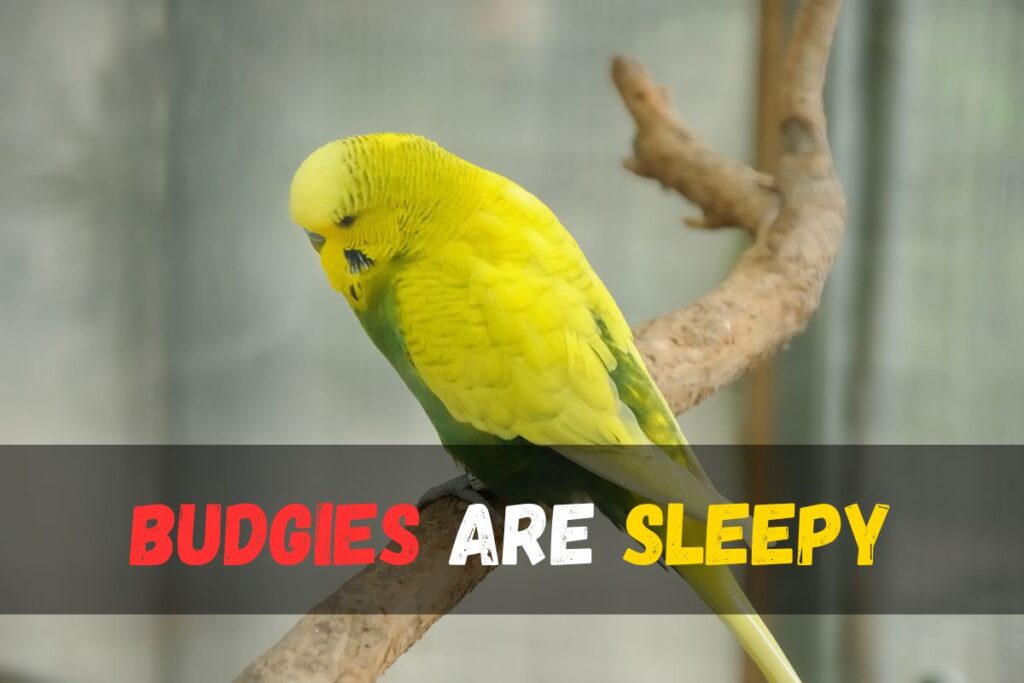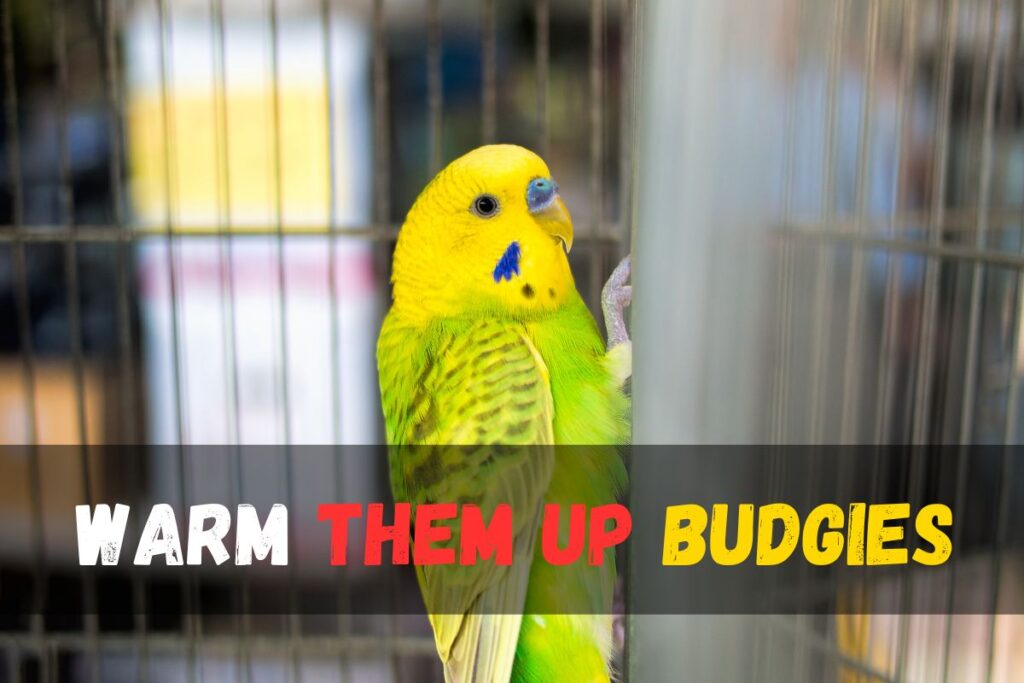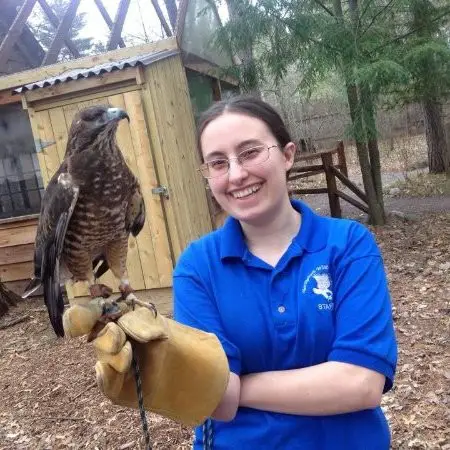Many bird enthusiasts and pet owners often find themselves pondering the intriguing question: Why do budgies puff up? Observing these charming birds perched on their branches, adorned with fluffy feathers, and occasionally breaking into cheerful tunes is undoubtedly delightful. However, the sight of a budgie puffing up may raise concerns and curiosity about the underlying reasons behind this behavior. To decipher the motives behind a budgie’s fluffed appearance, one must delve into the complexities of avian behavior, considering both the natural and potentially concerning aspects that contribute to this endearing yet sometimes puzzling display. Let’s explore the various factors that influence why budgies engage in the charming but enigmatic act of puffing up.
Why do budgies puff up
Budgies puff up for various reasons, and understanding their behavior requires attention to context and other indications. In normal and healthy situations, budgies often puff up their feathers to keep themselves warm, especially on chilly days or after a day of flying. This behavior is entirely natural. However, persistent puffing up can sometimes indicate an underlying disease, making it essential for bird owners to be vigilant.
Factors like tiredness, preparing for a bath, or feeling under the weather can also prompt budgies to fluff up. As popular family pets are known for their trainability and vibrant personalities, budgies are cherished for their active and playful nature. While a puffed-up and sleepy budgie may cause concern, it’s crucial to consider the broader context.
If a budgie is consistently puffing up more than usual and appears sleepier than normal, it could be a sign of a more serious issue, possibly a disease. In such cases, consulting a local trusted veterinarian is recommended to assess the situation and determine the best course of action. It’s important to note that puffing up isn’t always indicative of a disease, and this article aims to explore the various reasons behind a budgie’s puffed-up state, providing guidance for bird owners in different scenarios.
1. It’s Too Cold
Budgies puff up in colder temperatures as a clever survival strategy. When the thermometer drops below their comfort zone of 70°F to 75°F, budgies face the risk of getting too chilly and even hypothermia at temperatures as low as 60°F. To combat this, they instinctively conserve body heat by puffing up their feathers.

In this remarkable process, budgies create a cozy barrier of warm air around themselves. The key lies in the intricate design of their feathers, which acts as a shield against heat loss. As they puff up, the spaces between the feathers trap the warmth generated by their bodies, forming an insulated layer.
This ingenious adaptation allows budgies to endure colder conditions by preventing the escape of precious heat. The more they puff up, the more warm air they can capture, making them not only resilient but also comfortably adapted for longer durations in chilly weather.
So, when you see budgies puffing up on cold days, it’s their natural response to combat the cold, ensuring they stay warm and well-protected in the face of dropping temperatures.
2. Budgies are Sleepy
Budgies puff up primarily when they are ready to take a nap or sleep for the night. This behavior is a natural reaction to the colder nights, as nights are generally colder than days. The main purpose behind budgies puffing up is to ensure they stay warm while they rest. Even in warmer rooms, they might still exhibit this behavior out of instinct, especially during the summer.

The puffing up of their feathers serves a crucial purpose – it provides better insulation. By puffing up, budgies create air pockets within their feathers that trap warm air. This insulation helps prevent the loss of warmth from the budgie’s skin, allowing them to maintain a comfortable temperature while sleeping.
3. Due to Bath
Budgies, like humans, find joy in a relaxing bath. When approaching their own tub, these vibrant birds eagerly anticipate a good time. Particularly on hot days, you can observe them getting all puffed up just before taking the plunge into the water. This behavior serves a practical purpose – as they puff up, the dust that has settled on their feathers loosens. Once immersed in the water, the budgies effectively shake off the accumulated dust. As they emerge from their bath, they are not only refreshed but also ready to keep having fun! The puffing up is a natural pre-bath ritual that prepares them for an enjoyable and dust-free experience, highlighting the playful and carefree nature of these delightful birds.
4. For Groom Themselves
Budgies puff up for several reasons, and one significant motivation is their instinctive need to groom themselves. When budgies puff up, it serves as a mechanism to keep them squeaky clean by removing dirt. The act of fluffing up causes dust and debris to fall off their skin and feathers. As they move and shift their feathers, it allows them to use their beaks to preen, ensuring that every feather is meticulously cared for, and any remaining particles are eliminated.
Moreover, the puffing-up behavior is particularly noticeable when budgies are preparing for a bath. This is their way of shaking off built-up dirt, making the subsequent cleaning process more manageable. Budgies take pleasure in grooming themselves and maintaining good hygiene. During this self-care routine, they also straighten out their plumage, not only for cleanliness but also for added comfort.
Puffing up is a natural and essential part of budgies’ grooming rituals. It helps to smooth and straighten out feathers that might have become shuffled through the preening process. Overall, the puffing-up behavior in budgies is a fascinating combination of instinct, cleanliness, and the desire for physical comfort.
5. Hungry
Budgies, small parakeets known for their vibrant colors, exhibit an interesting behavior of puffing up their feathers when hungry, although it’s not a common sight. This behavior is primarily seen in young budgies, who may occasionally fluff up their feathers in anticipation of being fed.
The act of puffing up serves as a non-verbal communication signal among budgies, signaling their expectation of food. It’s not demanding in an aggressive sense, but rather an instinct, especially observed in younger members of the flock. When budgies are hungry, this behavior can be attributed to their instinctual response, expressing a physiological need for nourishment.
This puffing-up behavior can be linked to their inherent understanding that being more visually noticeable might attract the attention of their caretakers or other flock members, ultimately increasing the chances of receiving food promptly.
6. To Fend Off Threats
When they perceive danger, such as the presence of other birds or predators approaching their territory, budgies utilize a technique of fluffing up their feathers. This serves a dual purpose: making themselves appear larger and more intimidating. The puffing up is particularly noticeable in male budgies, and it involves a focus on the area under their necks and between the wings.
This defensive behavior is distinct from the puffing up observed during sleep, as it is characterized by the bird’s heightened alertness. During this defensive display, budgies may also engage in additional actions like ruffling their head feathers and pacing from side to side, accompanied by angry screeching. By adopting this posture, budgies aim to deter potential threats by presenting a visually imposing and assertive presence. In essence, the act of puffing up serves as a natural response to perceived danger, allowing budgies to effectively protect themselves and assert their dominance in their environment.
7. Due to Upset
When upset or scared, budgies tend to puff up their head feathers, signaling discomfort or distress. This behavior is accompanied by additional cues such as keeping their wings away from their bodies and twisting their tail feathers unusually. It’s a clear indication that they may be feeling anxious and apprehensive. In such moments, budgies might not be fond of having people get too close to them.
Understanding why your pets, in this case, budgies, puff up involves recognizing these behavioral cues as expressions of unease or fear. Whether it’s a reaction to a perceived threat or simply a sign of discomfort, it’s essential to approach them with sensitivity and give them the space they need to feel secure and at ease.
8. Excited and Happy
Budgies puff up as a sign of happiness and excitement, showcasing their social nature. These delightful birds engage in feather fluffing when having a good time, often in an attempt to impress their feathered companions or while playing with beloved toys. The accompanied chirping and singing, along with head bobbing and other joyful movements, indicate their great mood. This behavior can be further enhanced by interacting with them, such as talking to them or offering a new toy or treat. So, when your friends, the budgies, puff up, it’s a clear indication that they are enjoying themselves and expressing their happiness. Encourage their joyful moments by engaging with them and providing a stimulating environment with new toys or treats.
9. Due to Sickness
This behavior is often associated with various symptoms indicating potential health issues. When budgies are sick, they tend to spend most of their day with their feathers fluffed up, exhibiting a lack of interest in eating, playing, singing, or flying. Additionally, they may have wet poop sticking out of the vent.
Sick budgies often choose to hide in the corners of their cages, preferring to sleep on the cage floor using their two legs. Lethargy is a common trait, and they rarely react to the presence of their owners or external stimuli. Other signs of illness include a runny nose, sneezing, and shallow breathing with tail bobbing.
In the wild, budgies have a survival instinct to appear strong and healthy, even when they are not, as sick birds become easy prey for predators. This behavior persists in domesticated budgies, making it challenging for owners to detect sickness early on. If a budgie exhibits these symptoms, it is crucial to consult with an avian vet for proper diagnosis and treatment.
Can budgies eat blackberries?
What to do When Your Budgies are Puff Up?
When your budgies puff up, it’s essential to understand the underlying reasons and take appropriate measures to ensure the well-being of these beloved pets. Most often, budgies fluff up their feathers as a natural behavior that may not be a cause for concern. However, in some cases, it might signal potential threats to their health or happiness.
To address this, observe your budgies closely and consider the following expert advice:
Warm Them up
When you notice your budgies puffing up, it’s a clear sign that they might be feeling too cold. The first step is to assess the room temperature and ensure it is not the cause of their discomfort. Check the temperature during the day and nighttime; if it’s close to 60°F or below for an extended period, your budgies might start shivering.

To address this, look for drafts in their current location and consider moving them to a warmer room. Before relocating them, make sure the new spot is around 70°F. Another option is to adjust the thermostat and increase the heat to ensure they are comfortable. Remember, moderate temperatures are crucial for your budgies to thrive.
If these steps don’t suffice, you can invest in a bird cage heater. These handy gadgets are designed to keep your feathered companions warm when they need it the most. By taking these measures, you’ll create a cozy environment for your budgies, preventing any discomfort or risk of hypothermia.
Let the Birds Sleep
When your budgies are puffing up before sleeping, it’s completely normal. Ensure the room temperature is suitable, and allow them to fluff up without worry. Just let them be, and consider covering their cage to create a cozy sleeping environment. This natural behavior indicates that your budgies are comfortable and preparing for a good night’s sleep. By maintaining a comfortable temperature and providing a secure sleeping space, you are promoting their well-being and allowing them to rest peacefully.
Remember, birds have unique ways of expressing their comfort, and fluffing up before bedtime is one of them. Embracing this behavior shows that you understand and respect their natural instincts. So, in summary, when your budgies puff up before sleep, simply create a conducive environment, let them be, and watch them enjoy a restful night’s sleep.
Encourage Them to get Clean
When your budgies puff up, it’s a sign that they might need a little extra care. Budgies, like any pets, appreciate being clean and sharp. To encourage them to get clean, consider providing a small tub for a bath. This not only helps in maintaining their hygiene but also allows them to enjoy the process. Pay attention to their body language and puffing up – it might indicate they’re seeking comfort and relaxation. By offering them a chance to indulge in a bath, you not only fulfill their natural instincts but also strengthen the bond between you and your feathered friends. Remember, creating a positive and enjoyable environment for your pets contributes to their overall well-being.
Investigate if They are Afraid or Upset
Budgies, like any other pets, communicate through their behavior, and puffing up can signal distress. Begin by observing their surroundings. Check for any potential sources of unease, such as strange sounds, bright lights, or the presence of predators. If your budgies share a cage, monitor their interactions, as some budgies may not get along well and could be fighting frequently.
Should you notice signs of apprehension or anger, take immediate action. If there are external factors causing distress, eliminate or minimize them. Ensure the environment is quiet and secure. If budgies sharing a cage are fighting too often, consider separating them to create a harmonious living space.
FAQ’S
How can I ensure my budgies are happy and excited
Ensuring your budgies are happy and excited is key to their well-being. When you observe them puffing up, it’s a positive sign that they are thoroughly enjoying themselves. In such moments, the best thing to do is simply allow them to be excited. Your efforts in creating an environment that brings them joy and satisfaction are paying off, and the puffing up is a clear indicator of their contentment. By letting them express their excitement, you are fostering a positive and enriching experience for your budgies. Keep up the good work in providing them with a space where they can thrive and puff up in happiness!
Do Budgies Puff Up When Molting?
Budgies typically do not puff up their feathers during the molting process. Molting, which takes 2-3 weeks and occurs about 1-3 times a year, is a natural cycle for budgies. During this period, they go through the sequential process of losing and regrowing their feathers, resulting in healthier and more vibrant plumage.
While it’s rare, there may be exceptions where a budgie puffs up its feathers, especially if it is trying to compensate for a bare patch. In such cases, the budgie may puff up the feathers in the surrounding area to visually cover the bare spot. However, most budgies don’t seem bothered by displaying a bare or spiky feather during the molting process.
Why Do Budgies Puff Up Their Head Feathers?
Budgies puff up their head feathers for various reasons, and understanding their behavior requires careful observation. One common motive is to intimidate rival birds, marked by aggressive puffing, screeching, and side-to-side pacing. This behavior may also be an attempt to impress another budgie, evidenced by tail wagging and chirping.
To decipher the specific reason behind your budgie’s puffed-up feathers, look for accompanying signs. Signs of illness, chills, overheating, or increased aggression may necessitate intervention on your part. Generally, when a budgie is preening its feathers, it signals contentment, a desire for warmth, or an effort to attract a mate.
Why is my parakeet fluffed up and shutting its eyes?
Your budgie might be puffed up and closing its eyes due to what is commonly known as the ‘sick bird look’ or SBL. When a bird exhibits this behavior, it usually indicates that the bird is feeling unwell. The typical signs include being quiet, with eyes closed and feathers fluffed up. This behavior suggests that your budgie has lost the ability to pretend it is well and is now very ill.
What does unhealthy bird poop look like?
Unhealthy bird poop can manifest in various ways. One noticeable change is a difference in the color or texture of either the fecal component or the urate component. The droppings may appear “bubbly” in nature, indicating an abnormality. Another sign is an increase in the watery or liquid component, a condition known as polyuria or too much urine. Furthermore, the presence of blood in the droppings is a clear indication of an underlying health issue.
Monitoring these aspects of bird poop can provide valuable insights into the bird’s health. If you observe such changes, it is advisable to consult with a veterinarian promptly. Changes in color, texture, or the presence of blood may be indicative of various health issues, and addressing them early can contribute to the well-being of your feathered friend.


